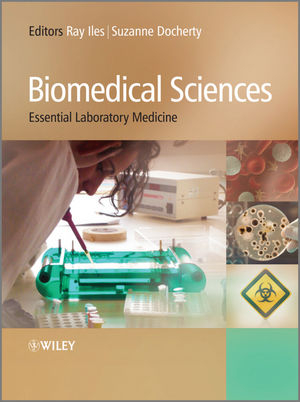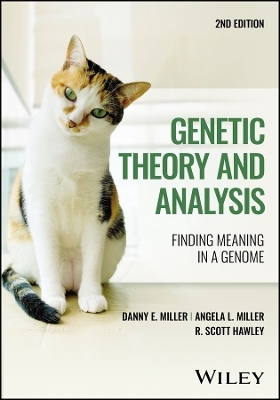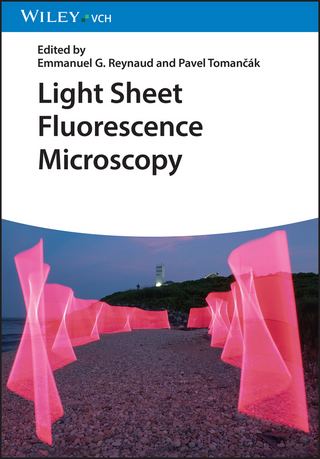
Biomedical Sciences
John Wiley & Sons Inc (Verlag)
978-0-470-99775-8 (ISBN)
Professor Ray Iles and Dr Suzanne Docherty, School of Health & Social Sciences, Middlesex University, Hendon Campus, London, UK. Ray Iles has experience of writing a chapter of Kumar & Clark's Clinical Medicine (one of the market leading textbooks for medical students) and would like to provide the same kind of core textbook for biomedical science students.
List of Contributors xi Preface xiii
Chapter 1 Anatomy and physiology of major organ systems 1
Ray K. Iles, Iona Collins and Suzanne M. Docherty
1.1 The skeletal system 1
1.2 The digestive system 6
1.3 The cardiovascular system 11
1.4 The urinary system 17
1.5 Respiratory system 21
1.6 The nervous system 23
1.7 The endocrine system 31
Bibliography 33
Chapter 2 Pathophysiology 35
Suzanne M. Docherty
2.1 Pathophysiology: a definition 35
2.2 Introduction to epidemiology 35
2.3 Introduction to pharmacology 38
2.4 Gastroenterology 44
2.5 Liver, biliary tract and pancreatic disease 50
2.6 Rheumatology 56
2.7 Urinary tract disease 59
2.8 Cardiovascular disease 65
2.9 Respiratory disease 76
2.10 Endocrine disease 80
Bibliography 88
Chapter 3 Clinical cell biology and genetics 89
Ray K. Iles and Stephen A. Butler
3.1 The cell 89
3.2 Genetics 103
3.3 Human genetic disorders 116
3.4 Important techniques in molecular cell biology 136
Bibliography 138
Chapter 4 Cellular pathology 139
Christopher M. Stonard and Jennifer H. Stonard
Part I: Principles of cellular pathology 139
4.1 Structure and function of normal cells, tissues and organs 139
4.2 Tissues and organs 140
4.3 Cellular responses to injury 141
4.4 Tissue responses to injury: acute inflammation 143
4.5 Tissue responses to injury: chronic inflammation 149
4.6 Healing and repair 151
4.7 Hyperplasia and hypertrophy 154
4.8 Atherosclerosis 155
4.9 Thrombosis and embolism 157
4.10 Ischaemia and infarction 159
4.11 Amyloid and amyloidosis 160
4.12 Infections of histological importance 162
4.13 Metaplasia, dysplasia and carcinoma in situ 165
4.14 Neoplasia 168
Part II: Clinical application and laboratory techniques 175
4.15 Sampling modalities 175
4.16 Fixation 178
4.17 Specimen dissection 180
4.18 Processing and embedding 182
4.19 Microtomy 184
4.20 Standard staining methods and procedures 186
4.21 Frozen section 190
4.22 Immunohistochemistry 191
4.23 Cytopathology 196
4.24 Electron microscopy 197
4.25 In situ hybridization 201
Bibliography 203
Chapter 5 Clinical chemistry 205
Ray K. Iles and Stephen A. Butler
Introduction 205
Part I: Analytical methods 205
5.1 Sample collection 205
5.2 Analytical methods in clinical chemistry laboratories 210
5.3 Summary: common clinical tests for sample analytes 231
Part II: Clinical assessments 232
5.4 Urea and electrolytes (U and Es) 232
5.5 Metabolism and gastrointestinal markers 234
5.6 Renal function tests 236
5.7 Liver function tests 237
5.8 Heart disease and lipid disorder tests 238
5.9 Pancreatic function tests 240
5.10 Bone disease assessment 241
5.11 Endocrinological assessments 241
5.12 Pregnancy tests and pregnancy clinical chemistry 249
5.13 Therapeutic drug monitoring and toxicology 251
5.14 Clinical chemistry at the extremes of age 253
5.15 Cancer biomarkers 254
Bibliography 259
Chapter 6 Medical microbiology 261
Sarah J. Furrows and Catherine S. Fontinelle
Introduction 261
6.1 Overview of microorganisms 261
6.2 Laboratory investigation of infection 265
6.3 Bacteria 277
6.4 Fungi 284
6.5 Parasitology --- protozoa and helminths 288
6.6 Viruses 290
6.7 Prions 297
6.8 Infections in the immunocompromised patient 298
6.9 Healthcare associated infections 299
6.10 Antimicrobial agents 302
6.11 Vaccines 307
6.12 Conclusion 309
Bibliography 309
Chapter 7 Clinical immunology 311
Ray K. Iles and Ivan M. Roitt
Part I: The fundamentals of immunology 311
7.1 Overview of the immune system 311
7.2 Overview of the immune response 316
7.3 MHC genotyping, autoimmunity and susceptibility to disease 321
7.4 Physical age and immunocompetency 322
Part II: Laboratory investigations and immune assessments 323
7.5 Inflammation and chronic infection 323
7.6 Autoimmune diseases 324
7.7 Transplant rejection 325
7.8 Hypersensitivities 326
7.9 Immune deficiency 326
Bibliography 328
Chapter 8 Haematology and transfusion science 329
Suzanne M. Docherty
8.1 Introduction and components of blood 329
8.2 Routine laboratory blood tests 332
8.3 Haemopoiesis 336
8.4 Red blood cell structure, disorders and metabolism 337
8.5 Haemoglobin 342
8.6 Anaemia 353
8.7 Benign white blood cell disorders 359
8.8 Haemostasis 361
8.9 Coagulation disorders 366
8.10 Myeloproliferative disorders 371
8.11 Haematological malignancies 373
8.12 Complement 378
8.13 Blood transfusion 380
8.14 Blood products 390
8.15 Haemopoetic stem cell transplantation 393
Bibliography 395
Chapter 9 Professional practice and biomedical science 397
David Ricketts
9.1 What is a biomedical scientist? 397
9.2 The IBMS 397
9.3 Professional practice and the role of the HPC 398
9.4 Standards of proficiency --- biomedical scientists 399
9.5 Expectations of a health professional 400
9.6 Professional relationships 401
9.7 The skills required for the application of practice 401
9.8 Knowledge, understanding and skills 402
9.9 Standards of conduct, performance and ethics 403
9.10 CPD 403
9.11 Critical reflection 404
9.12 IBMS CPD scheme 404
9.13 The professional biomedical scientist as an agent for change in the wider healthcare setting 405
Appendix 407
Index 413
| Erscheint lt. Verlag | 30.1.2012 |
|---|---|
| Verlagsort | New York |
| Sprache | englisch |
| Maße | 178 x 254 mm |
| Gewicht | 1193 g |
| Themenwelt | Medizin / Pharmazie ► Allgemeines / Lexika |
| Medizin / Pharmazie ► Medizinische Fachgebiete ► Biomedizin | |
| Naturwissenschaften ► Biologie | |
| ISBN-10 | 0-470-99775-3 / 0470997753 |
| ISBN-13 | 978-0-470-99775-8 / 9780470997758 |
| Zustand | Neuware |
| Haben Sie eine Frage zum Produkt? |
aus dem Bereich


